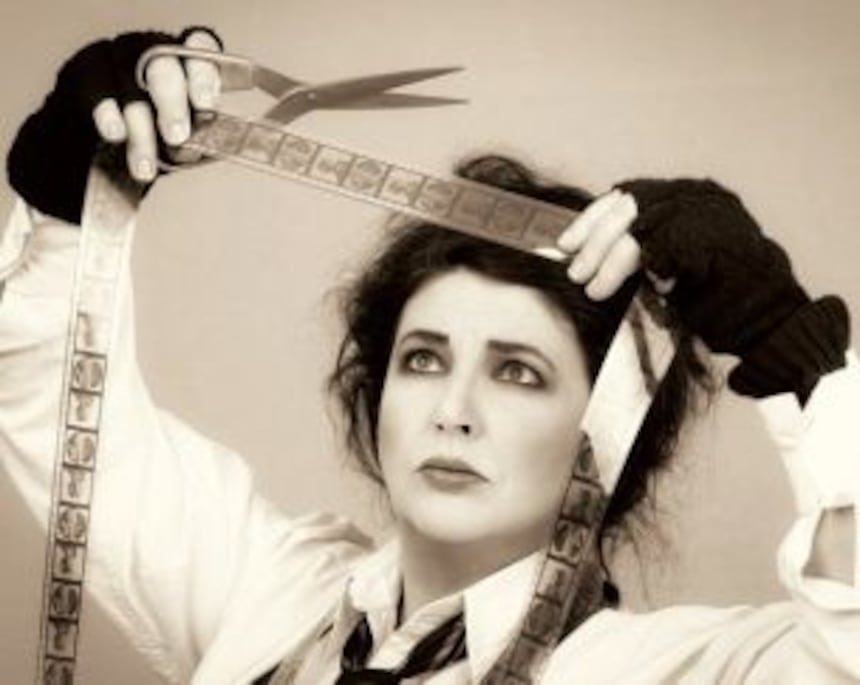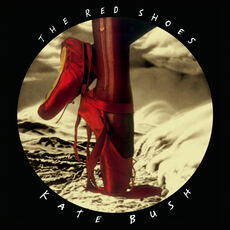“Wuthering Heights” from The Kick Inside (1978)
One of the most startling debut singles ever released, “Wuthering Heights” found the 19-year-old Kate Bush casting herself as a spectre. Instantly spotlighting the story-telling approach to lyrics that would become a key characteristic of her songs, Bush inhabited the character of Catherine Earnshaw from Emily Brontë's classic 1847 novel of doomed love, who had come to haunt “cruel Heathcliff” from beyond the grave.
Appropriately, then, Bush sang “Wuthering Heights” in an unnaturally high, keening register, which caused one radio DJ in the vinyl age to mistakenly believe they were playing the 45 RPM single at 78 RPM. Nonetheless, the single was so arresting and catchy that it reached number one in six countries (including the singer’s native UK, where it stayed at the top for a month).
It was all the more remarkable for the fact that Bush had to battle her record label EMI to release “Wuthering Heights” as her first single (execs arguing for the rockier “James and the Cold Gun”). The result was that Bush became an instant star—a shock to the system for someone whose teenage ambition had been to make an album, not to be famous—and the single, in all its atmospheric rock wonder, became an enduring classic, set to echo through the decades.
“Wow” from Lionheart (1978)
Bush’s swiftly recorded follow-up to The Kick Inside was not destined to be her favourite of her albums—she felt it had been rushed. During the sessions at Super Bear Studios in the French Alps northeast of Nice, there was conflict between the record’s producer, Andrew Powell, and the singer (and aspirational producer).
Recalling the spooked wonder of “Wuthering Heights,” “Wow” was the standout cut. An epic pop song revealing a suspicion of showbiz plaudits and fear of the spotlight (“We’re all alone on the stage tonight”), its hooky, circular chorus burst out of moody, orchestral verses revealing the artifice of performing (“When the actor reaches his death/ You know it’s not for real, he just holds his breath”). What’s more, a cheeky reference to a thespian “hitting the Vaseline,” as Bush tapped her bottom in the single’s video, ensured it was banned by BBC TV.
“Wow” was also the first evidence of Bush’s determined studio perfectionism: she reportedly took days to record its vocals. Powell remembered the experience as being “physically very demanding and intensely frustrating for her.” Eventually, the singer was rightly satisfied with the delicate-to-enraptured emotional quality of her delivery.
Kate Bush - Wow
Typhoon“Breathing” from Never for Ever (1980)
Bush was completely in thrall to Pink Floyd’s The Wall double album upon its release in late 1979 (“They’d said it all,” she enthused) and determined to up her game with this filmic, apocalyptic closer of her third (and first co-produced, with Jon Kelly) long-player, Never for Ever.
Working at Abbey Road Studios in London, as a spiritual heir to the audio adventurism of The Beatles, Bush employed a modus operandi that was perhaps closer in spirit to Steely Dan. A parade of bassists arrived at the sessions before John Giblin’s slinky fretless part was deemed to be the right one for the track.
“Breathing” is an ominous creation, sung from the perspective of an unborn foetus whose mother is struggling to survive after a nuclear blast (“Chips of plutonium are twinkling in every lung,” the singer grimly details). Even with its brooding atmosphere, “Breathing” alleviates its heaviness with an alluringly pretty melody, before a faux radio news bulletin emerges amid its climax, reporting a nuclear explosion and attempting to measure the extent of its devastating effect. Chilling, yet tender, “Breathing” offered further proof that Kate Bush was no ordinary artist.
“Sat In Your Lap” from The Dreaming (1982)
Inspired by the powerful grooves she heard at a Stevie Wonder show in London in August 1980, “Sat In Your Lap” was demoed by Kate Bush in a rush of creativity at her home studio the next day. In its fully realised version, the track was a riot of angular tom-toms, sampled vocal percussion and neurotic trumpets (supplied by Yes’s Geoff Downes via a Fairlight CMI).
A taster for the more abstract, beats-driven tracks from Bush’s first entirely self-produced album, The Dreaming (itself clearly informed by Brian Eno and David Byrne’s polyrhythmic 1981 masterpiece My Life In The Bush Of Ghosts), “Sat In Your Lap” was issued as a standalone single in the summer of 1981 and signified that the singer was further turning to face the strange. With an intriguing tangle of thoughts concerning the human hunger for knowledge, tempered by inherent laziness (“I really can’t be bothered/ Ooh, just gimme it quick!”), it was an utterly unique sonic proposition that stills sounds just as thrilling and fresh today.
“Running Up That Hill (A Deal With God)” from Hounds Of Love (1985)
Long before its use as a repeated theme in Netflix’s Stranger Things in 2022 (resulting in it twice topping Billboard’s Global 200 chart that year), “Running Up That Hill…” was considered something of a wonder upon its original release in ‘85. It also broke a three-year silence for Bush, during which time she’d built a private studio in a barn at her parents’ home and bunkered in to create her masterpiece, Hounds Of Love.
In its creator’s mind, the title of the song was “A Deal With God,” reflecting the unearthly, soul-swapping conceit of the lyric, its ritualistic atmosphere stirred up by a rolling LinnDrum beat, odd Fairlight keyboard figures and Bush’s multi-faceted vocal approaches. But, ahead of its release, EMI warned her that a song with the word “God” in the title was unlikely to be played on the radio in various international territories, stymieing the single’s commercial chances. In a very rare moment of compromise, the singer agreed to bracket the title and prefix it with “Running Up That Hill.”
The afterlife of Bush’s greatest hit has of course underlined its modernity (like much of current pop, it is mainly rooted in beats and voices) and, ultimately, its timelessness. Exhibit A when it comes to displaying Kate Bush’s virtually unparalleled talent for weird pop, “Running Up That Hill (A Deal With God)” remains a towering achievement.
“And Dream Of Sheep” from Hounds Of Love (1985)
“And Dream Of Sheep” found Kate Bush temporarily ditching the synths and sampling technology, returning once again to the piano and double-tracking its high notes in clouds of reverb. Save for the fleeting presence of two famous Irish musicians—Dónal Lunny with his simpatico bouzouki runs and John Sheahan’s eerie whistle parts—and the faint sound of a radio shipping forecast, this was the sound of Bush returning to first principles, fittingly alone, since it was the opening movement of her first, seven-track song-suite, “The Ninth Wave,” which begins with a girl lost at sea.
No explanation is offered as to why she’s ended up in this terrifying situation, but she is clearly drifting in and out of consciousness, and likely suffering the disorientating effects of hypothermia: seeing the waves as white horses, feeling the breath of imagined sheep on her face as they tug her down into perilous slumber.
The reference to “poppies heavy with seed” only emphasises the dangerously narcotic mood of “And Dream Of Sheep,” before the trippy narrative of “The Ninth Wave” takes the central character on a nightmarish journey that—depending on how you read it—either ends in rescue or rebirth.
“Rubberband Girl” from The Red Shoes (1993)
Given its enigmatic title, “Rubberband Girl,” the first single from Bush’s long-gestated (and patchy) seventh album was a suitably bouncy pop song. Fueled by a stark, Prince-y beat (the Minneapolis whiz was to appear elsewhere on the record), John Giblin’s rolling, funky bass, marimba interjections and the rock guitar outbursts of Bush’s soon-to-be-partner, Danny McIntosh, the track was one of the singer’s most upbeat creations.
“See those trees bend in the wind,” Bush began, envying their flexibility. “See I try to resist,” she went on, before imagining herself as some kind of elastic entity, able to bounce her way through life’s challenges: “If I could learn to give like a rubberband/ I’d be a rubberband girl.”
As great as the original was, Bush chose to return to it—along with various other tracks from The Red Shoes and its 1989 predecessor, The Sensual World, whose productions she remained nigglingly unsatisfied by—when making 2011′s Director’s Cut. The remake was looser and bluesier: McIntosh’s choppy guitar playing echoing Keith Richards while Bush mumbled and slurred her words, as if attempting to physically imitate the sound of a rubber band.

“King Of The Mountain” from Aerial (2005)
After 12 years of absence from the public eye, Kate Bush returned in 2005 with the grand gesture that was her first double album. As its opening track and first single, “King Of The Mountain” intriguingly explored the idea of myths and legends building around a missing celebrity (much as they had done with Bush herself, by this time regularly labeled “the Greta Garbo of pop”).
The song’s lyrics playfully wondered aloud whether Elvis Presley had somehow faked his own death and was now living in some imagined wilderness, along with the equally mysterious “Rosebud” sled from Orson Welles’s Citizen Kane. From here, the singer clearly enjoyed referencing additional rumours and fantasies about Presley: a modern-day Hollywood waitress claiming to be pregnant with his child; “a photograph where you’re dancing on your grave”; the belief that Elvis was waiting to “rise again someday.”
Smudged synth arpeggios, skanking guitars and a rolling groove drove “King Of The Mountain,” a brilliant comeback single from Bush. Moreover, it was fresh evidence that her knack for tangential pop remained intact even after more than a decade away.
“Aerial” from Aerial (2005)
The ambitious second half (or disc) of Aerial featured Bush’s second song-suite, following Hounds Of Love’s “The Ninth Wave” two decades before. The 42-minute “A Sky of Honey” was themed around a summer’s day, beginning in late afternoon and following it through to the following dawn. The concluding, near-eight-minute-long title track revealed new musical influences for Bush, not least the ecstatic, four-on-the-floor beats of early rave.
The trancey groove of “Aerial” was the backdrop to the singer’s repeated cries of, “I feel I wanna be up on the roof!” At first, these appeared to be the screams of a particularly energised partygoer celebrating first light. But then, at 2:29, Bush began “duetting” with the recorded sounds of a blackbird, mainly through the medium of human laughter. As the section progressed, it was clear that her urge for rooftop freedom was perhaps due to the fact that she was actually turning into a bird.
It was characteristically heady, high concept stuff, further illuminated during Bush’s surprise 2014 run of live shows in London, Before The Dawn. When she performed “Aerial,” she pulled off the neat visual trick—via a feathery costume and stage wires—of transforming into a blackbird and briefly flying into the air before the lights were cut.
“Among Angels” from 50 Words for Snow (2011)
2011′s winter-themed 50 Words For Snow encompassed a ghost story (“Lake Tahoe”), a time travel duet with Elton John (“Snowed In At Wheeler Street”) and even a love affair with a snowman (“Misty”), but “Among Angels” was the stunning standout. Many of the album’s tracks found Bush at the piano, once again showcasing the skills she’d developed as a teenager, but it was this closer that revealed an unmistakable maturity.
Bush addressed an unnamed, troubled friend, offering empathy but also supernatural reassurance: “I can see angels standing around you/ They shimmer like mirrors in summer/ But you don’t know it.” Halfway through, American orchestrator Jonathan Tunick’s string arrangement swept in, old Hollywood-style, to add support, and stir the emotions.
During her Before The Dawn shows, “Among Angels” was the sole track that Kate Bush performed alone on the stage, adding to the song’s intimacy. As her last recorded offering (to date), it stands as one of her greatest.









